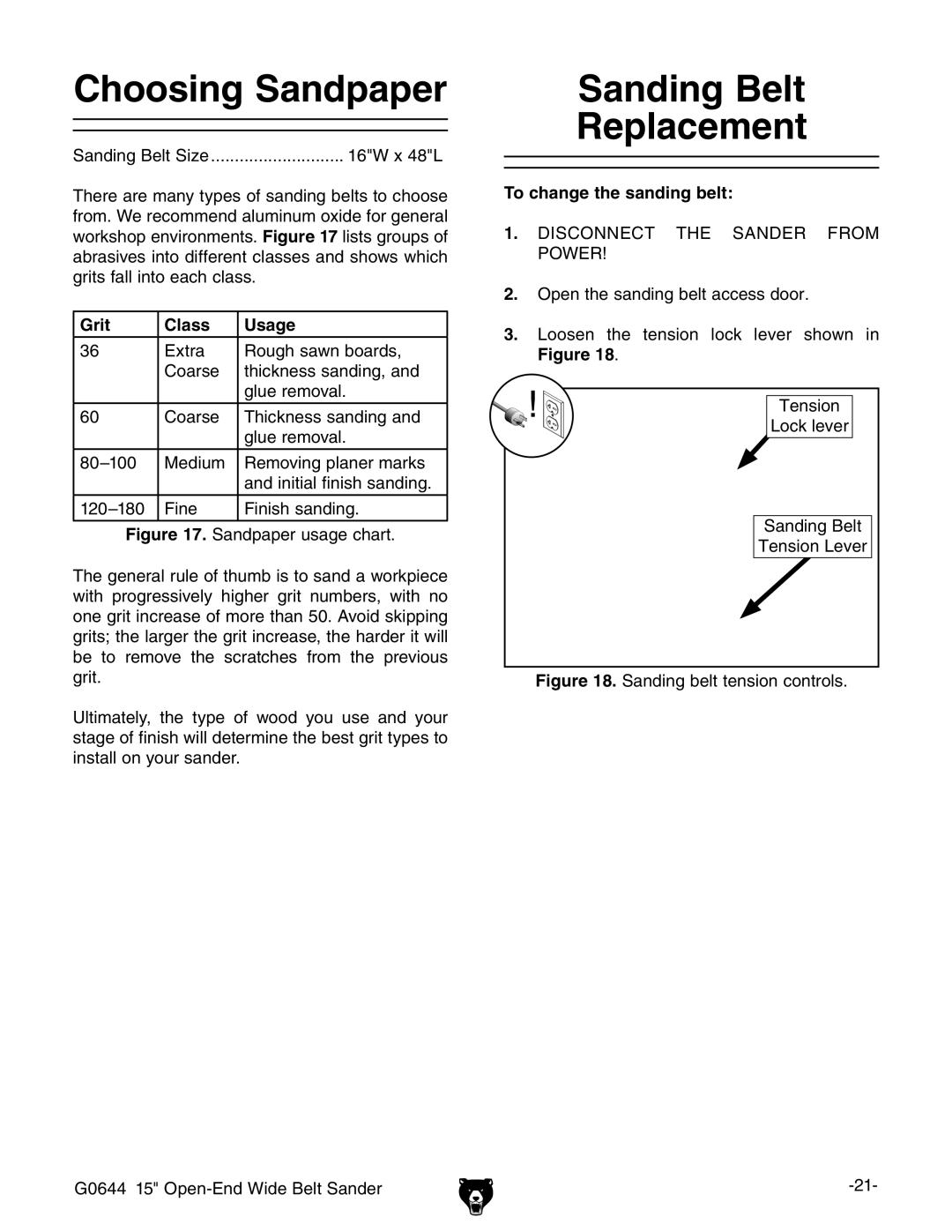
choosing sandpaper
Choosing Sandpaper
Sanding Belt Size | 16"W x 48"L |
There are many types of sanding belts to choose from. We recommend aluminum oxide for general workshop environments. Figure 17 lists groups of abrasives into different classes and shows which grits fall into each class.
Grit | Class | Usage |
36 | Extra | Rough sawn boards, |
| Coarse | thickness sanding, and |
|
| glue removal. |
|
|
|
60 | Coarse | Thickness sanding and |
|
| glue removal. |
Medium | Removing planer marks | |
|
| and initial finish sanding. |
|
|
|
Fine | Finish sanding. | |
|
|
|
Figure 17. Sandpaper usage chart.
The general rule of thumb is to sand a workpiece with progressively higher grit numbers, with no one grit increase of more than 50. Avoid skipping grits; the larger the grit increase, the harder it will be to remove the scratches from the previous grit.
Ultimately, the type of wood you use and your stage of finish will determine the best grit types to install on your sander.
sanding belt replacement
Sanding Belt
Replacement
To change the sanding belt:
1.DISCONNECT THE SANDER FROM POWER!
2.Open the sanding belt access door.
3.Loosen the tension lock lever shown in Figure 18.
Tension |
Lock lever |
Sanding Belt |
Tension Lever |
Figure 18. Sanding belt tension controls.
G0644 15" |
